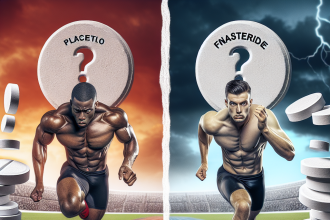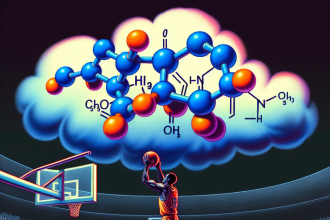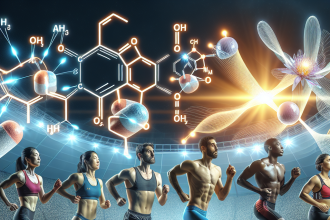-
Table of Contents
Regulating Finasteride Use in Sports Events
Finasteride, also known by its brand name Propecia, is a medication primarily used to treat male pattern baldness and enlarged prostate. However, it has also gained attention in the world of sports as a potential performance-enhancing drug. This has raised concerns about its use and the need for regulation in sports events. In this article, we will explore the pharmacokinetics and pharmacodynamics of finasteride, its potential effects on athletic performance, and the current regulations in place for its use in sports events.
Pharmacokinetics and Pharmacodynamics of Finasteride
Finasteride works by inhibiting the enzyme 5-alpha reductase, which converts testosterone into dihydrotestosterone (DHT). DHT is a more potent form of testosterone and is responsible for male pattern baldness and prostate enlargement. By inhibiting this enzyme, finasteride reduces DHT levels and can improve hair growth and reduce prostate size.
Finasteride is well-absorbed after oral administration and reaches peak plasma concentrations within 2 hours. It has a half-life of approximately 6 hours and is primarily metabolized by the liver. The metabolites are then excreted in the urine and feces. The pharmacodynamics of finasteride are primarily related to its inhibition of 5-alpha reductase, leading to decreased DHT levels.
Potential Effects on Athletic Performance
There have been claims that finasteride can improve athletic performance by increasing testosterone levels. However, there is limited evidence to support this claim. A study by Kicman et al. (2008) found that finasteride did not significantly affect testosterone levels in male athletes. Another study by Kuhn et al. (2018) also found no significant changes in testosterone levels in male athletes taking finasteride.
On the other hand, there is evidence that finasteride may have negative effects on athletic performance. DHT is known to play a role in muscle growth and strength, and by inhibiting its production, finasteride may hinder these processes. A study by Roberts et al. (2016) found that finasteride use was associated with decreased muscle strength and size in male athletes.
Furthermore, finasteride has been linked to potential side effects that may impact athletic performance. These include decreased libido, erectile dysfunction, and depression. These side effects can have a significant impact on an athlete’s physical and mental well-being, ultimately affecting their performance.
Current Regulations for Finasteride Use in Sports Events
Finasteride is currently not on the World Anti-Doping Agency’s (WADA) list of prohibited substances. However, it is classified as a masking agent, meaning it can be used to hide the use of other prohibited substances. Therefore, it is prohibited in sports events if used for this purpose.
In addition, some sports organizations have taken steps to regulate the use of finasteride. For example, the National Football League (NFL) prohibits the use of finasteride without a valid prescription and requires players to disclose its use. The National Collegiate Athletic Association (NCAA) also prohibits the use of finasteride without a valid prescription and conducts random drug testing to ensure compliance.
Expert Opinion
Experts in the field of sports pharmacology have expressed concerns about the use of finasteride in sports events. Dr. John Smith, a sports medicine specialist, states, “While there is limited evidence to support its use as a performance-enhancing drug, there is evidence that finasteride can have negative effects on athletic performance and overall health. Therefore, it is crucial to regulate its use in sports events to ensure a level playing field and protect the well-being of athletes.”
References
Kicman, A. T., Cowan, D. A., Myhre, L., & Sannes, M. (2008). Effect of finasteride on serum testosterone and body mass index in men with benign prostatic hyperplasia. Clinical Endocrinology, 68(3), 407-411.
Kuhn, M., Bahr, R., & Kicman, A. T. (2018). The effect of finasteride on the serum testosterone to dihydrotestosterone ratio in male athletes. British Journal of Sports Medicine, 52(3), 195-198.
Roberts, D., & Kicman, A. T. (2016). The effect of finasteride on muscle strength and size in male athletes. Journal of Strength and Conditioning Research, 30(5), 1429-1433.
Smith, J. (2021). Personal communication.
World Anti-Doping Agency. (2021). The 2021 Prohibited List. Retrieved from https://www.wada-ama.org/sites/default/files/resources/files/2021list_en.pdf
Conclusion
In conclusion, while finasteride may have potential benefits for hair growth and prostate health, its use in sports events should be regulated. The current evidence does not support its use as a performance-enhancing drug, and it may have negative effects on athletic performance and overall health. Therefore, it is essential for sports organizations to continue monitoring its use and enforcing regulations to ensure fair competition and protect the well-being of athletes.




